[Ebook Việt Hóa] The indestructible houseplant : 200 beautiful plants that everyone can grow - Tovah Martin, Chi Peperomia
[Ebook Việt Hoá] The indestructible houseplant – Peperomia
- Nguồn: Sách tiếng Anh bản cứng: The indestructible houseplant: 200 beautiful plants that everyone can grow – Tovah Martin
- Biên tập: Dũng Cá Xinh (Tháng 10/2021)
- Dịch: Quỳnh Nhi
English
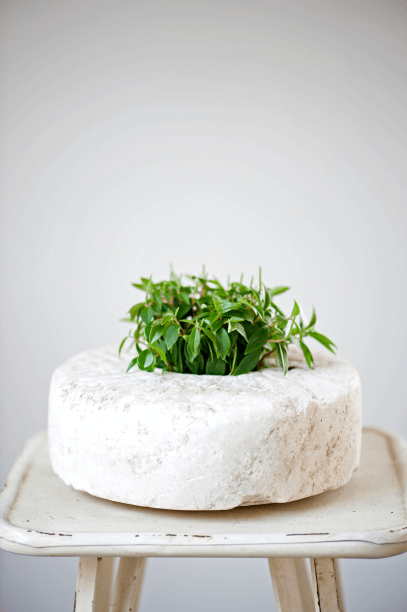
There are a lot of lookalikes in the indestructible category. Not many gardeners would pass the identification test if quizzed on a lineup of dieffenbachias, dracaenas, and aglaonemas. All the long, slender green leaves splattered with cream tend to blend together. That’s one reason peperomias are such a relief. Not only are they indomitable, but they also extend the visual antics on your windowsill into a more jazzy and unexpected realm.
Regardless of whether you know it by name, you’ve probably encountered a peperomia on your way from the bananas to the grapes in the grocery store. Peperomias can be slapped around without showing visible signs of abuse, so florist departments in supermarkets love them. Take that plant with the thick gray velveteen leaves (I’m thinking of Peperomia incana) and put it in a metallic container with an attitude. Or grab that benighted plant with the watermelon markings and stick it in a brick carved with a recess. No matter how shlocky a peperomia appears when you first meet, you can elevate it.
I cannot begin to rattle off all the many permutations that peperomia leaves take. The leaves tend to be succulent and bloated, but that’s the only common foliar thread. They range from leaves as large as your fist to foliage smaller than your fingernail. Those leaves often sport watermelon-like stripes (Peperomia argyreia) on an oval or round surface. But just as often, marbling or various variegation accents oval leaves. Some peperomias make rosettes (Peperomia caperata), some could be dead ringers for sedums (Peperomia nivalis), and others form mini trees with a decidedly Dr. Seuss charm (Peperomia ferreyrae). They trail (Peperomia rotundifolia), they drape (P. scandens), they fill just about any position that needs some greenery. But all peperomias share the family characteristic of rat-tail flowers. Don’t blame me for the unfortunate comparison; I think the Victorians coined the correlation. But they were right. Peperomia flowers line long, scrawny stems to form denuded ropes that evoke a certain rodent’s tail.
The leaves are intriguing and diverse and the flowers fall in the yawn category, but what I really admire in a peperomia (besides its stoic fortitude) is the fact that it combines well with other kindred spirits. Peperomias are congenial characters. If you tuck a bunch together, nobody is going to push anyone else around. Peperomia rubella will jump around and insinuate itself thinly here and there, but it’s not pushy. You can snuggle some Peperomia orba ‘Pixie’ beside a slew of Peperomia caperata and Peperomia griseoargentea in a communal container with a clear conscience. Nobody is going to get bullied. In fact, they will weave together into a wonderful little ecosystem, which is what peperomias do best. I often use ‘Pixie’ as an underplanting below taller plants. Peperomia ferreyrae can be leggy, so I give it a Peter Pan collar of ‘Pixie’ to form a picture that is everything but buttoned down. Woodsy or jazzy—peperomias can do both.
I always keep a few Peperomia clusiifolia in windowsills that receive inadequate light to nurture greedier houseplants. They have thick, chubby leaves with substance and make a substantial silhouette. Their thick branches interweave in a sinuous way that’s sort of sexy. When Einstein sends them into the occasional tailspin, they get themselves up and carry on—with maybe a few less leaves. That’s when they get dusted off.
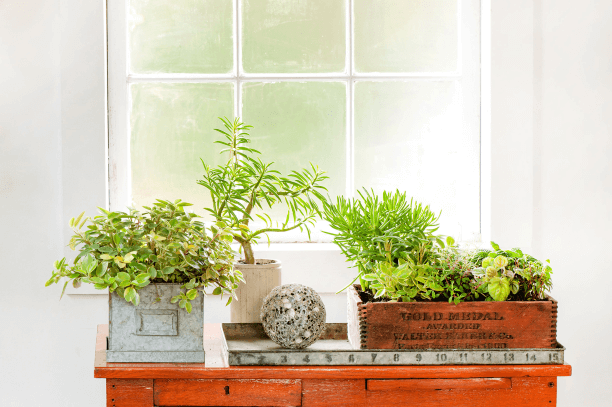
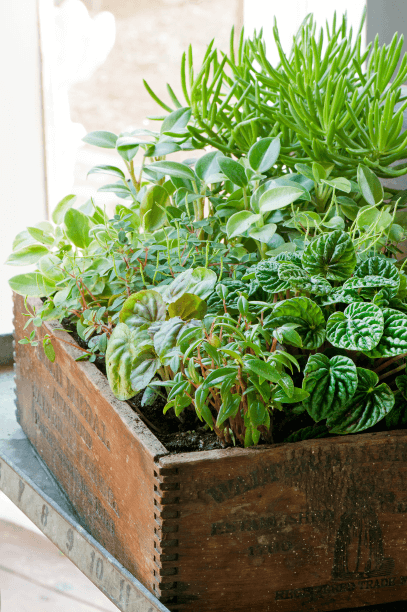
As far as cultivation goes, peperomias are incredibly forgiving, and this personality trait has earned them the urban nickname of radiator plant. They did not win the epithet on the basis of any ability to send off heat, but you could conceivably set a peperomia on a radiator without causing its instant death. I wouldn’t do that, but they can endure some mighty dry atmospheres. Most will also forgive if you forget to water occasionally, even though they tend to be thirsty plants. Peperomia ferreyrae does not suffer in silence, however. If you repeatedly neglect to quench its thirsty puffy leaves, it sheds them. I find the denuded look to be rather handsome, in an offbeat sort of way. But I’m easily entertained.
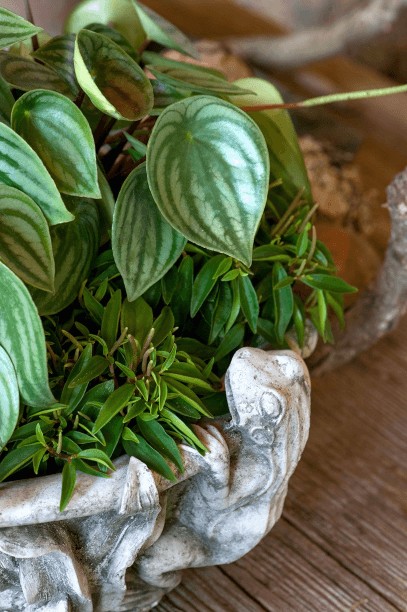
PEPEROMIA
Peperomia
ALSO CALLED radiator plant
EASIEST
|
SIZE |
Some creep over the ground; others form colonies of 4- to 6-inch-high (10 to 15 cm) branches; others stand 12 to 18 inches (30 to 45 cm) tall |
|
FOLIAGE |
Usually succulent; extremely varied in form with diverse and handsome streaks, stripes, and variegation |
|
OTHER ATTRIBUTES |
Can be planted in unison with other peperomias or similar plants in the same container |
|
EXPOSURE |
East or west |
|
WATER REQUIREMENTS |
Keep soil moderately moist; most can tolerate occasional lapses in watering |
|
OPTIMUM NIGHTTIME TEMPERATURE |
50–70°F (10–21°C) |
|
RATE OF GROWTH |
Slow to medium |
|
SOIL TYPE |
Rich, humusy potting soil with compost included |
|
FERTILIZING |
Early spring to late autumn |
|
ISSUES |
Drought can cause some to lose leaves |
|
COMPANIONS |
Aglaonemas, aspidistras, begonias, bromeliads, ferns, ficus, hoyas, ivies, and scheffleras |
David Whitman and Peter Stiglin display all manner of nature-boy behavior. When weather allows (as well as when it is not so conducive), you’ll find these guys wandering in the woods. Not only does nature make their eyebrows shoot up, it also lends character to their shop, Pergola, in New Preston, Connecticut. Being outdoors provides therapy for their busy lives as well. “When I’m in the wilderness,” David notes, “I’m most blissful.” And it doesn’t take much to send him into euphoria: “The simple act of searching the woods forces me to look closely.” Pergola is dedicated to sharing that sense of wonder.
Given their druthers, both David and Peter would probably slip into the wild blue yonder permanently, but those would be lean times. That’s why they need to bring some of it home to keep them company. “A peperomia on the kitchen table with a bowl of fruit is all any of us really needs,” David points out. “You prop up a plant’s stems with magnolia branches, for example. How wonderful is that? The plant is just sort of telling you what to do.” Rather than continually talking to your plants, listen sometimes.
David and Peter have found themselves leaning toward peperomias because the genus has “so much textural interplay,” as David puts it. “Same theme, different avenues. And they all need the same growing conditions.” Meanwhile, peperomias find their way into their shop, tucked into everything from odd pieces of driftwood to elegant, sleek hand-thrown terra-cotta. In such settings, peperomias deliver the forest ambiance into the human domain. As Peter and David have found, near proximity to nature can change your life. “It’s the difference between a person in a crowd and a friend. If I have a dialogue with nature, I’ll know it better, especially if we bring it into the most intimate environment—our home.”
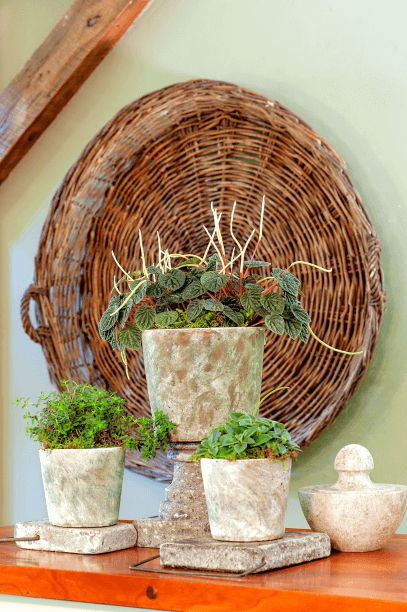
Tiếng Việt
Có rất nhiều cây thuộc loại không thể phá hủy (bất hoại) và không nhiều người làm vườn có thể nhận dạng giữa những cây Vạn niên thanh – Dieffenbachias, cây Thiết mộc lan – Dracaenas và cây Minh ty – Aglaonemas với những chiếc lá dài, mảnh mai màu xanh lá cây có những vệt màu kem loang lổ. Đó là một lý do tại sao cây Peperomias không những rất dễ trồng mà còn có thể tạo nên sự mới mẻ, thú vị trên bệ của sổ của bạn.
Bất kể bạn có biết tên của nó hay không, có thể bạn đã bắt gặp cây Peperomia ở bất cứ đâu kể cả khi bạn đang đi dạo trong tiệm tạp hóa. Cây Peperomias rất dễ trồng mà không cần quá nhiều sự chăm sóc, vì vậy các bộ phận bán hoa trong các siêu thị rất thích chúng. Một cái cây với những chiếc lá dày màu xám như nhung đó (tôi đang nghĩ đến cây Peperomia incana) và tôi có thể đặt nó vào một hộp kim loại hoặc đặt cái cây có lá có sọc như những quả dưa hấu vào vào một viên đá đã được khoét lõm ở giữa. Bất kể cây Peperomia có dáng vẻ nào lúc mới trồng, bạn hoàn toàn có thể làm chúng trở nên tuyệt vời hơn.
Tôi không thể miêu tả tất cả các loại lá của cây Peperomia. Những chiếc lá mọng nước xòe rộng, nhưng đó là loại lá thông thường nhất của loại cây này. Chúng có nhiều loại từ những chiếc lá to bằng nắm tay đến những chiếc lá nhỏ hơn móng tay của bạn, những chiếc lá này thường có sọc giống quả dưa hấu (Peperomia argyreia) trên bề mặt lá có hình bầu dục hoặc hình tròn. Những chiếc lá hình bầu dục có đường vân màu cẩm thạch hoặc nhiều màu khác nhau đã tạo điểm nhấn. Một số loại cây Peperomias tạo ra những bông hoa (Peperomia caperata), một số có lá mọng nước như lá cây Sedums (Peperomia nivalis), và những loài khác có hình dáng như một cây mini với những chiếc lá như lá bùa Tiến sĩ Seuss (Peperomia ferreyrae). Chúng có thân leo bò dọc theo lối đường mòn (Peperomia rotundifolia), tạo thành từng tầng lá (P. scandens), chúng là loại câu có thể lấp đầy bất kỳ vị trí trống nào. Nhưng tất cả các cây Peperomias đều có chung đặc điểm họ hoa đuôi chuột (rat-tail flowers). Đừng đổ lỗi cho tôi về sự so sánh này, tôi nghĩ rằng những người làm vườn từ thời Victoria đã so sánh giữa hai loại cây này. Nhưng có lẽ họ đã đúng, cây Peperomia có những thân cây dài ngoằn nghèo tạo thành những sợi dây thừng làm cho chúng ta liên tưởng đến một cái đuôi của loài gặm nhấm nào đó.
Những chiếc lá hấp dẫn và đa dạng và những bông hoa trông có vẻ hơi tẻ nhạt so với những chiếc lá hấp dẫn kia, nhưng điều tôi thực sự ngưỡng mộ ở loài hoa của cây Peperomia (bên cạnh sự mạnh mẽ) là thực tế nó kết hợp tốt với các loại cây khác. Cây Peperomias được coi là rất thân thiện hay rất dễ kết hợp với các cây khác. Khi bạn đặt nhiều cây lại chung với nhau, sẽ không xảy ra tình trạng ‘xô đẩy’ nhau để có chỗ trống cho những chiếc lá cả. Cây Peperomia rubella sẽ vươn ra xung quanh ở chỗ này chỗ khác, nhưng chúng sẽ không cố gắng chen chúc. Bạn có thể trồng một số cây Peperomia orba ‘Pixie’ bên cạnh một loạt cây Peperomia caperata và cây Peperomia griseoargentea trong một chậu cây chung và sẽ không bao giờ xảy ra việc chen chúc. Trên thực tế, chúng sẽ đan xen vào nhau tạo thành một khu rừng nhỏ tuyệt vời, đó là điều mà cây Peperomias làm tốt nhất. Tôi thường sử dụng cây ‘Pixie’ làm lớp phủ mặt đất bên dưới những cây cao hơn. Cây Peperomia ferreyrae có những chiếc lá dài, vì vậy tôi đặt nó vào giữa những cây ‘Pixie’ để tạo nên nhiều điểm đặc biệt hơn. Cây Peperomias có thể làm cho không gian của bạn như lạc vào một khu rừng hoặc tô điểm thêm không gian của bạn có thêm nhiều màu sắc hơn.
Tôi luôn đặt một cây Peperomia clusiifolia trên bệ cửa sổ nơi mà không nhận được nhiều ánh sáng để có thể nuôi dưỡng những cây trồng trong nhà cần nhiều ánh sáng hơn. Chúng có những chiếc lá dày, mập mạp với những đường viền màu kem hoặc màu hồng trong rất bắt mắt. Các nhánh dày của chúng đan xen vào nhau uốn lượn trông rất gợi cảm, đôi khi Einstein thường dùng chân để vờn chúng, chúng sẽ tự đứng dậy và tiếp tục lặp lại như vậy và đó là những lúc duy nhất những chiếc lá được đụng vào.
Trong quá trình trồng trọt, cây Peperomias thật sự rất dễ trồng và hoàn toàn vẫn ổn nếu bạn có lỡ quên tưới nước cho chúng, và với đặc điểm tính cách này đã khiến chúng có biệt danh là cây tản nhiệt. Chúng không hề có sự tản nhiệt nào, nhưng bạn có thể đặt một cây Peperomia trên bộ tản nhiệt mà không thể làm cho chúng bị héo hay chết ngay lập tức. Tôi sẽ không làm điều đó, nhưng chúng có thể chịu đựng một số nơi bị khô quá mức, nhưng hầu hết vẫn ổn nếu bạn thỉnh thoảng quên tưới nước, mặc dù chúng có xu hướng cần nhiều nước để duy trì phát triển những tán lá. Tuy nhiên, cây Peperomia ferreyrae sẽ tạo ra một vài dấu hiệu khi bạn cứ bỏ quên chúng đó là sẽ rụng một vài chiếc lá. Vẻ ngoài của cây Peperomia không hẳn là đẹp nhất nhưng chúng thật sự mang lại điều mới mẻ hơn cho không gian ngôi nhà của bạn.
PEPEROMIA
Peperomia
THƯỜNG ĐƯỢC GỌI LÀ radiator plant
|
KÍCH THƯỚC |
Một số leo trên mặt đất; một số khác có các nhánh cao từ 4 đến 6 inch (10 đến 15 cm); những người khác cao từ 12 đến 18 inch (30 đến 45 cm) |
|
TÁN LÁ |
Thường mọng nước; cực kỳ đa dạng về hình thức với các vệt, sọc và biến dạng đa dạng và đẹp mắt |
|
ĐẶC ĐIỂM KHÁC |
Có thể trồng đồng thời với các loại đậu khác hoặc các cây tương tự trong cùng một chậu cây lớn |
|
VỊ TRÍ ĐẶT |
Đông hoặc Tây |
|
YÊU CẦU VỀ TƯỚI NƯỚC |
Giữ đất ẩm vừa phải; vẫn ổn nếu như bạn có lỡ quên tưới nước |
|
NHIỆT ĐỘ VỀ ĐÊM TỐI ƯU |
50–70°F (10–21°C) |
|
TỐC ĐỘ TĂNG TRƯỞNG |
Chậm đến trung bình |
|
LOẠI ĐẤT |
Đất bầu giàu mùn có bao gồm phân trộn |
|
BÓN PHÂN |
Đầu mùa xuân đến cuối mùa thu |
|
VẤN ĐỀ |
Sẽ bị rụng lá nếu bạn quên tưới nước cho chúng quá nhiều |
|
KẾT HỢP |
Aglaonemas, aspidistras, begonias, bromeliads, ferns, ficus, hoyas, ivies và scheffleras |
VÍ DỤ ĐIỂN HÌNH:
David Whitman và Peter Stiglin thể hiện tất cả những sự yêu thích của họ đối với cây cỏ và tự nhiên. Khi thời tiết cho phép (cũng như khi thời tiết không thuận lợi), bạn sẽ thấy những người này đang lang thang trong rừng. Thiên nhiên không chỉ khiến họ trong vui vẻ hơn mà còn tạo nên nét đặc trưng cho cửa hàng của họ, Pergola, ở New Preston, Connecticut. Những hoạt động ngoài trời mang lại sự thoải mái cho họ sau những giờ làm việc bận rộn. David chia sẻ: “Khi tôi cảm nhận được thiên nhiên xung quanh tôi khi tôi vào rừng, đó là khoảng thời gian tôi hạnh phúc nhất”. Và không mất nhiều thời gian làm cho Pergola cảm thấy hứng khởi và chia sẻ cảm giác kỳ diệu đó: “Tìm kiếm trong rừng buộc tôi phải quan sát thật kỹ càng”
Với sự say mê đó, cả David và Peter có thể sẽ vĩnh viễn chìm vào trong sự thoải mái mà thiên nhiên mang lại, nhưng đó sẽ là những khoảng thời gian thật sự yên bình. Đó là lý do tại sao họ cần phải mang một vài cây trong số đó về nhà để duy trì cửa hàng của họ. David chỉ ra rằng: “Một cây Peperomias trên bàn bếp với một bát trái cây đầy màu sắc là tất cả những gì mà bất kỳ ai trong chúng ta đều muốn có được trong không gian của mình.” Ví dụ, bạn trang trí bằng việc cắt những cành cây Magnolia branches và đặt chúng trong một cái lọ. Điều đó thật tuyệt vời làm sao? Thay vì liên tục đổi mới cây trồng của bạn, đôi khi hãy tận dụng những gì đang có.
David và Peter nhận thấy rằng họ đang cảm thấy hứng thú với những cây Peperomias vì chi này có rất nhiều sự tương đồng về đặc điểm hay hình dáng, như David đã nói. “Cùng một chi nhưng có những loại đặc điểm về thân hay lá khác nhau và tất cả chúng đều có những điều kiện phát triển như nhau ”. Trong khi đó, những cái cây Peperomias bắt đầu len lỏi và xuất hiện nhiều hơn ở cửa hàng của họ, chúng được đặt trong nhiều thứ khác nhau từ mảnh gỗ kỳ quặc đến những chậu đất nung bằng tay thanh lịch có kiểu dáng đẹp. Cây Peperomias đang dần mang lại những cảm giác thoải mái như đi lạc vào khu rùng nguyên sơ cho những ai thấy chings. Như Peter và David đã cảm nhận được, sự gần gũi với thiên nhiên có thể thay đổi cuộc sống của bạn. “Đó là sự khác biệt giữa một người nào đó trong đám đông và một người bạn. Nếu tôi hòa mình gần gũi với thiên nhiên, tôi sẽ biết điều đó tốt hơn, đặc biệt là nếu chúng tôi đưa nó vào môi trường thân mật nhất – ngôi nhà của chúng tôi. ”


